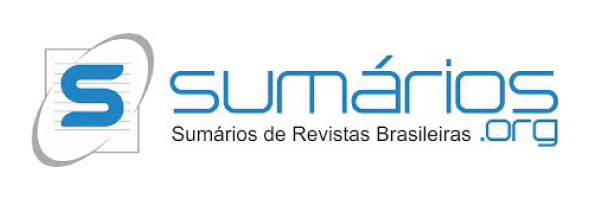Brazilian Version of a Questionnaire Assessing Adolescent's Experiences in Orthodontic Treatment
Tradução e Adaptação Transcultural de um Questionário Para Avaliação das Percepções de Adolescentes sobre o Tratamento Ortodôntico
Keywords:
Surveys and questionnaires., Orthodontics., Adolescent., Cross-cultural comparison.Abstract
Introduction: Instruments of quality of life related to oral health are used with increasing frequency in research. However, these instruments are not available in all countries or languages. The availability of multilingual versions of instruments, valid for different cultures, is important for epidemiological research. Objective: To translate and carry out the cross-cultural adaptation of the questionnaire developed by Feldmann in 2007, concerning the perceptions of adolescent patients about orthodontic treatment, into Portuguese. Methods: Initially, the equivalence of concepts and items was discussed by a group of experts who examined the items in the questionnaire. Four adolescents were interviewed using the focus group methodology. The instrument was then submitted to the following steps: two translations into Portuguese by independent translators, pre-testing of the questionnaires in 6 patients, reverse translation, review by committee and finally a pilot study with the final version. In this stage, 20 adolescents aged between 12 and 17 years, of both genders, were interviewed, evaluated at the Orthodontics Clinic of the Faculty of Dentistry of the State University of Rio de Janeiro. The questionnaire was applied to two groups: untreated adolescents and adolescents undergoing orthodontic treatment. Results: From these evaluations, the Brazilian version of the Feldmann questionnaire was produced, with administration and format appropriate to the target population. Conclusions: The translation and cross-cultural adaptation of the questionnaire into Portuguese was performed ensuring its semantic and conceptual equivalence with the original instrument and the final version was consistent in a pilot study.
References
2. Arnett GW, Worley CM Jr. The treatment motivation survey: Defining patient motivation for treatment. Am J Orthod Dentofacial Orthop. 1999 Mar;115(3):233- 8.
3. Bos A, Hoogstraten J, Prahl-Andersen B. Expectations of treatment and satisfaction with dentofacial appearance in orthodontic patients. Am J Orthod Dentofacial Orthop. 2003 Feb;123(2):127-32.
4. Zhang M, McGrath C, Hägg U. Patients’ expectations and experiences of fixed orthodontic appliance therapy: impact on quality of life. Angle Orthod. 2007 Mar;77(2):318-22.
5. Yao J, Li DD, Yang YQ, McGrath CPJ, Mattheos N. What are patients’ expectations of orthodontic treatment: a systematic review. BMC Oral Health. 2016 Feb; 16:19.
6. Albino JEN, Lawrence SD, Lopes CE, Nash LB, Tedesco LAMed. 1991;14(1):53–70.
7. Feldmann I, List T, John M.T, Bondemark L. Reliability of a Questionnaire Assessing Experiences of Adolescents in Orthodontic Treatment. Angle Orthodontist. 2007; 77(2)311-317.
8. Grassi-Oliveira R, Stein LM, Pezzi JC. Translation and content validation of the Childhood Trauma Questionnaire into Portuguese language. Rev Saúde Púb. 2006; 40(2):249-255.
9. Li L, Wang HM, Shen Y. Chinese SF-36 Health Survey: translation, cultural adaptation, validation, and normalisation. J Epidemiol Community Health. 2003; 57(4):259-263.
10. Maneesriwongul W, Dixon JK. Instrument translation process: a methods review. J Adv Nurs. 2004; 48(2):175-186.
11. Van Widenfelt BM, Treffers PD, de Beurs E, Siebelink BM, Koudijs E. Translation and cross-cultural adaptation of assessment instruments used in psychological research with children and families. Clin Child Fam Psychol Rev. 2005; 8(2):135-147.
12. Sperber AD: Translation and validation of study instruments for cross-cultural research. Gastroenterology. 2004; 126(1 Suppl 1): S124-128.
13. Herdman M, Fox-Rushby J, Badia X. A model of equivalence in the cultural adaptation of HRQoL instruments: the universalist approach. Qual Life Res. 1998;7(4): 323-325.
14. Gava ECB, Miguel JAM, Araújo, AM, Oliveira BH. Psychometric properties of the Brazilian Version of the Orthognathic Quality of Life Questionnaire. J Oral Maxillofac Surg. 2013; 71(10): 1762.e1 - 1762.e8.
15. Guillemin F, Bombardier C, Beaton D. Cross-cultural adaptation of health-related quality of life measures: literature review and proposed guidelines. J Clin Epidemiol. 1993;46(12):1417-32.
16. Beaton, DE, Bombardier, C, Guillemin, F, Ferraz, M.B. Guidelines for the Process of Cross-Cultural Adaptation of Self-Report Measures. Spine. 2000; 25(24), 3186–3191.
17. Araújo AM, Miguel JAM, Gava ECB, Oliveira BH. Translation and cross-cultural adaptation of an instrument designed for the assessment of quality of life in orthognatic patients. Dental Press J. Orthod. 2013; 18(5): 99-106.
18. Reichenheim ME, Moraes CL. Operacionalização de adaptação transcultural de instrumentos de aferição usados em epidemiologia. Rev Saúde Púb. 2007; 41(4): 665-673.
19. Ruperto N, Ravelli A, Pistorio A, Malattia C, Cavuto S, Gado-West L, et al. Cross-cultural adaptation and psychometric evaluation of the Childhood Health Assessment Questionnaire (CHAQ) and the Child Health Questionnaire (CHQ) in 32 countries. Review of the general methodology. Clin Exp Rheumatol. 2001;19(4 Suppl 23):S1-9.













